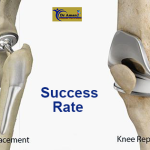2023 Arthritis Pain in Winter: Managing Relief
Arthritis is a common condition that affects millions of people around the world, and for those who live with it, winter can be a challenging time. As the temperatures drop and the air becomes chillier, those with arthritis often experience increased joint pain, stiffness, and discomfort. In this comprehensive article, we will explore the various aspects of arthritis pain in winter and provide practical tips on managing and finding relief from the winter woes.
Arthritis Pain in the Winter
What is Arthritis?
Before we delve into the impact of winter on arthritis, it’s essential to understand what arthritis is. Arthritis is a broad term that encompasses a range of joint-related diseases. The two most common types are osteoarthritis and rheumatoid arthritis.
Osteoarthritis: Often referred to as the “wear and tear” arthritis, osteoarthritis typically occurs with age. It is characterized by the gradual breakdown of the cartilage inside the joints, leading to pain and swelling, especially during movement. Osteoarthritis comm only affects joints in the hands, lower back, neck, and weight-bearing joints like the knees, hips, and feet.
only affects joints in the hands, lower back, neck, and weight-bearing joints like the knees, hips, and feet.
Rheumatoid Arthritis: In contrast, rheumatoid arthritis is an autoimmune condition where the immune system mistakenly attacks the joints. It can affect people of all ages, including the young. Rheumatoid arthritis causes prolonged joint pain, stiffness, and swelling, often affecting the small joints of the fingers and toes, wrists, elbows, shoulders, knees, and the neck and jaw.
Really Arthritis Pain Really Get Worse in Winter?
Many people with arthritis report increased discomfort during the winter months, leading to the belief that arthritis pain worsens in cold weather. Some studies have suggested that individuals with arthritis are more likely to experience pain on windy and humid days.
However, the exact scientific reasons for this phenomenon are still not entirely clear.
There are several theories, including:
Lower Atmospheric Pressure: Some believe that the drop in atmospheric pressure during cold weather may influence joint pain.
Sensitivity to Cold: Increased sensitivity of nerves in colder conditions can result in greater discomfort.
Reduced Activity Levels: People tend to be less active during the winter months, which can lead to increased stiffness and pain.
It’s crucial to understand that while the correlation between winter and arthritis pain is acknowledged, there’s no definitive answer as to why this occurs. The good news is that although arthritis is an incurable condition, there are ways to manage the discomfort, especially during the colder months.
4 Strategies to Managing Arthritis Pain in Winter
Now that we’ve explored the dynamics of arthritis and its potential relationship with winter discomfort, let’s delve into practical strategies for managing and finding relief from arthritis pain in the winter.
-
Maintain a Healthy Weight
One of the most effective ways to alleviate arthritis pain is by maintaining a healthy weight. Extra body weight places additional strain on joints, exacerbating osteoarthritis. Regular exercise and a balanced diet can help maintain a healthy weight and body mass index (BMI). Losing even a modest percentage of body weight, especially if you are overweight or obese, can significantly improve osteoarthritis symptoms and provide pain relief.
-
Eat a Joint-Friendly Diet
Diet plays a crucial role in managing arthritis. Consuming foods rich in omega-3 fatty acids, such as salmon and mackerel, can have anti-inflammatory effects that alleviate arthritis discomfort. A Mediterranean-style diet, which includes healthy oils, nuts, and whole grains, has also been found to be beneficial. Some patients have reported a significant reduction in pain after transitioning to a wholefoods, plant-based diet.
Vitamin K, found in olive oil and margarine, is essential for bone cartilage health and may decrease the risk of osteoarthritis. Vitamin D, crucial for bone health, is primarily absorbed through sunlight, making supplements necessary during the winter months.
-
Limit Pro-Inflammatory Foods
Certain foods are believed to be pro-inflammatory and may exacerbate arthritis symptoms. These include omega-6 polyunsaturated fats found in oils like corn, sunflower, and safflower, as well as saturated fats found in animal products. Reducing fat in meat and substituting omega-6 fats with mono-unsaturated fats like rapeseed and olive oils can be helpful.
-
Prioritize Exercise
Exercise is a cornerstone in managing arthritis pain. Despite concerns about pain worsening, exercise is the most effective non-drug treatment for reducing arthritis discomfort and improving joint mobility. Low-impact exercises like brisk walking, swimming, jogging, yoga, and strength training are beneficial. The recommended weekly aerobic exercise is 150 minutes of moderate intensity or 75 minutes of vigorous intensity.Orthopedic & Sports surgeon can help you in arthitis pain with the help of Arthroscopy and Arthroplasty.Contact with the Best Orthopod appointment .




